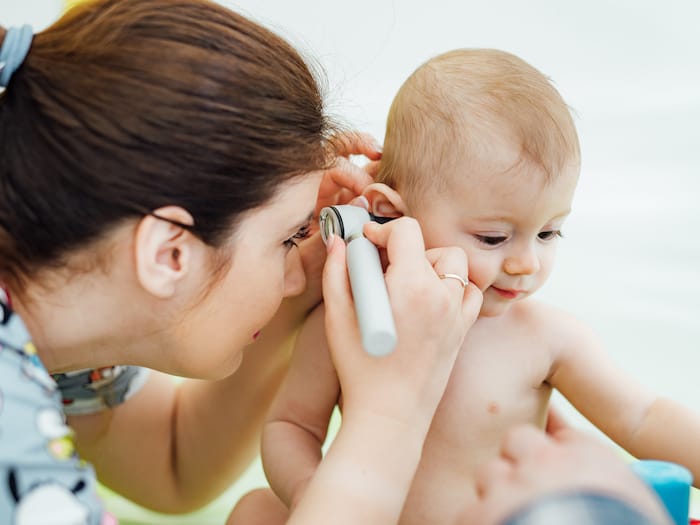Hearing assessment for adults is straightforward because adults can give behavioral responses based on what they hear. However, the Paediatric population, especially infants and young children, cannot give reliable subjective responses on the test compared to testing conducted on adults. Thus, they need to undergo a different hearing assessment suited for their age. Different objective and subjective hearing assessment methods are specifically designed for different Paediatric age groups, such as newborns, toddlers, and preschoolers.
It is essential to test the hearing of newborns and infants because about 1 to 2 in a thousand babies are born with permanent hearing loss. Undetected hearing loss and identification of hearing loss without intervention will cause delay in speech, language, social and emotional development.
Newborn 24 hours to the first few days after birth
Newborns in this age group will be screened with either or both tests below before being discharged.
Otoacoustic Emissions (OAE)
For OAE, a probe will be inserted into the ear canal of the newborn, and tones will be presented. The reflection of the sound from the cochlea (hearing organ) will be recorded as responses. Usually, this test only takes about a couple of seconds to a few minutes.
Automated Auditory Brainstem Response (AABR)
AABR screening is conducted by attaching electrodes to the head and face of babies, and sounds will be presented through the earphones. The activity in the brain is measured by the electrodes and will be analyzed as pass or fail. This test usually takes 10-15 minutes, including preparation.
Newborn hearing screening will be done for all babies to detect any presence of hearing loss as early as possible. If the babies fail the screening, they will be referred to undergo more comprehensive diagnostic hearing tests.
Before any hearing assessment, the audiologist will perform an otoscopic examination to look into the ear canal to ensure that the ear canal is free of earwax or any other signs of inflammation.
Newborn hearing screening is not a diagnostic test, and it has the risk of missing out on those with mild hearing loss. Even if a diagnostic hearing test showed normal hearing, it is essential to monitor the children’s hearing from time to time.
Children’s hearing might change over time because they are more prone to get middle ear infections or earwax blockage. Monitor their hearing as they grow because this is the golden period for them to learn and develop new skills.
Diagnostic Hearing Assessment
Birth to 6 months
Auditory Brainstem Response (ABR) is an objective diagnostic hearing test for newborns from birth to 6 months old or older children who have difficulty giving reliable responses from behavioral hearing assessment.
The concept of testing is the same as AABR, but this is a diagnostic test in which an audiologist will know an estimation of hearing level.
Six months to 2 years old
Visual Reinforcement Audiometry (VRA) is conducted for this functional age group to test their hearing. As long as the child can sit independently and turn their neck, the test suits them.
The child will be conditioned to turn the head toward the visual reinforcement (a box with a light-up toy) after hearing the sound from the testing. By training the child, the child will be able to turn or their head whenever he hears the sound, and these will be recorded as responses.
2 years to 5 years old
The hearing test for this age group is Conditioned Play Audiometry (CPA). The test is conducted by playing with some toys with the child while doing the audiometric assessment. The child will need to put down a toy whenever they hear a sound (e.g., put a peg in a hole, put the block in a box, stack up lego). The testing will be more fun and enjoyable for the child as it comprises play compared to the testing on adults, which requires them to press a button whenever a sound is heard.
Five years old and above
Children five years old and above who can perform the task reliably will be tested using pure tone audiometry (PTA). The child must raise the hand or press the button when a sound is heard. This test method is the same as adults, requiring much attention from the child.
Tympanometry
Tympanometry is an integral part of the hearing assessment. It is to measure the middle ear function and the mobility of the eardrum. No behavioral responses are required from the child in this test; he will need to stay still and not move his mouth during the test.
Further tests, such as speech perception tests for children, especially those fitted with hearing amplification devices, need to verify their hearing performance.
Booking an Appointment
Want to book an appointment for your child to have a hearing test? Send us a message to schedule an appointment with our reliable audiologists and hearing health professionals.
